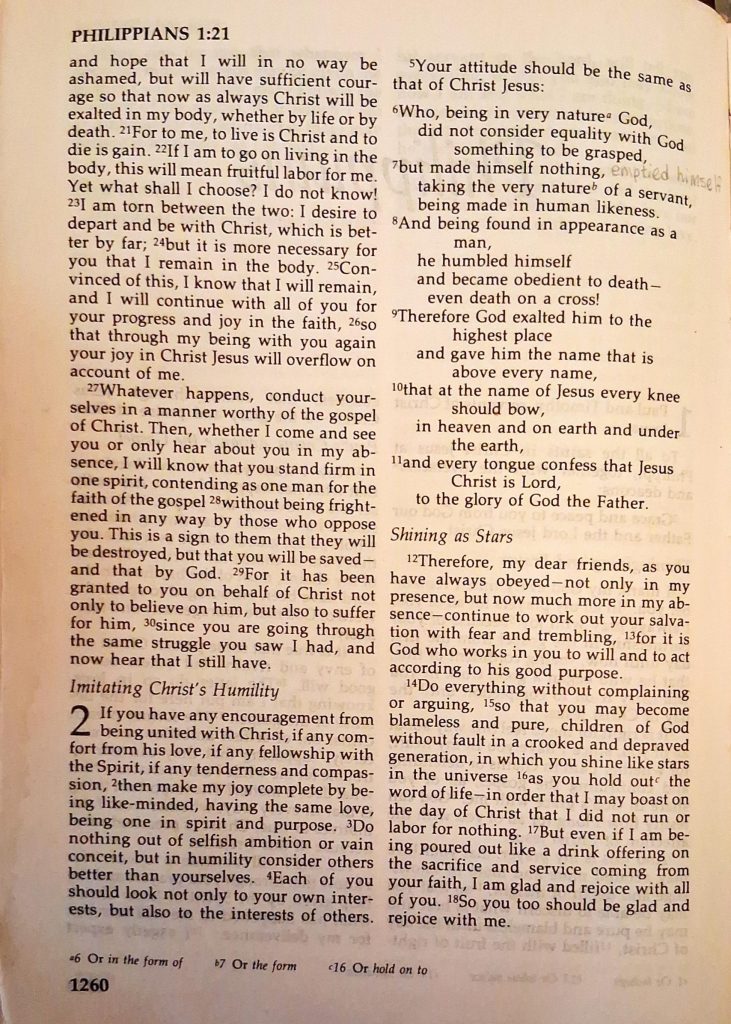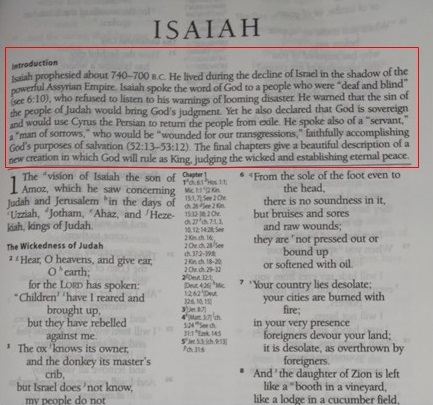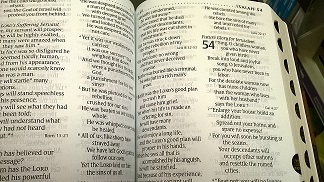Some Features that are Basic to All Bible Versions
The most important decision in buying a Bible is to decide which translation you want. But there are some other basic features that may help you to narrow down your options. These are all a matter of personal preference and do not impact the content of the Bible. Consider these factors:
- Text Format
Every Bible is formatted by book, chapter and verse. So, John 3:16 refers to the book of John, chapter 3, verse 16. Some Bibles start each verse at a new line, while others are formatted by paragraph. Verse formatting makes it easier to find a specific verse. Paragraph formatting is slightly easier to read and has a nicer flow. But it’s harder to find a specific verse because the verse numbers are scattered throughout the paragraph and the numbers are usually very small. A particular version will utilize one format or the other, so take that into consideration when choosing your version.
- Poetry Format

There are five books in the Old Testament that are poetry books. And throughout other Bible books there may be short sections of poetry. Some versions format this text as poetry, others do not. Again, a particular version will do one or the other exclusively. You can always turn to the Book of Psalms in the Old Testament (just about the center of the Bible) to see which format is being used.
- Red Letter Edition
There are many versions of the Bible that print the spoken words of Jesus in red ink. Just check the gospels (the first four books of the New Testament) to see if a particular version includes this feature.
- Personal Pronouns
Some versions of the Bible capitalize the personal pronouns (he, him, his, etc.) when that word refers to God and Jesus. Others use standard English grammar rules. A version will do one or the other throughout the entire bible.
- Book Summary
Many versions include a summary of each book at the beginning of the book. This was written by the editors and is not part of the Bible text. It will provide the major topics of the book and may include the name of the author, who it was written to and when it was written. It could be as short as one paragraph or as long as a complete page (or more).

- Maps
Almost every Bible will have a set of maps at the back of the book. Some have three or four, others have quite a few more. These can be quite interesting when you’re reading the Bible history books. But they may provide more information than is valuable to you. If this is important to you, you’ll want to factor that into your decision criteria
- Concordance
Many Bibles have a concordance. Almost all study Bibles include one, but even some devotional Bibles and text only Bibles will include a concordance. A concordance will be at the back, before the maps and it looks like a dictionary. Instead of giving the definition of a word it will list the major Bible verses where that word appears and will show some of the text surrounding that word. This tool is really helpful in finding a particular verse or verses on a particular topic.
- Book Tabs
Chiseled book taps come with many leather-bound Bibles and even some hard back copies. If you’re new to the Bible this can be a great help in quickly finding the book you want. Once you’re familiar with the Bible you should try to memorize the book order, as that’s the fastest way to find a specific book.

- Book marker ribbon
Most leather bound Bibles also include a ribbon book mark sewn into the spine. Some of the hardback copies will also include this feature. Soft back copies do not include this feature. While this seems like a nice feature, they can get in the way. I usually just put mine at a particular page and leave it there.
- Personal information pages
Many leather bound Bibles will have front pages that allow you to record information about your family history. These may also be found in some hardback copies, but generally not in soft back copies. Some also provide blank pages at the back for note taking.
- Page and text size
Page size can range from index card size (small enough to put in a purse or pocket) to large coffee table size. If you are buying a Bible that you will use often, take with you to church or to a Bible study, you will want one that is large enough to easily read the print. The print size will vary with the page size, so factor that into your consideration. There are Bibles that come in large print that are usually the size of a large text book. And there are Bibles that are designed to be small or thin which will impact the text size and the weight of the paper.
Make your way to the Translations page and keep these features in mind as you consider your options.